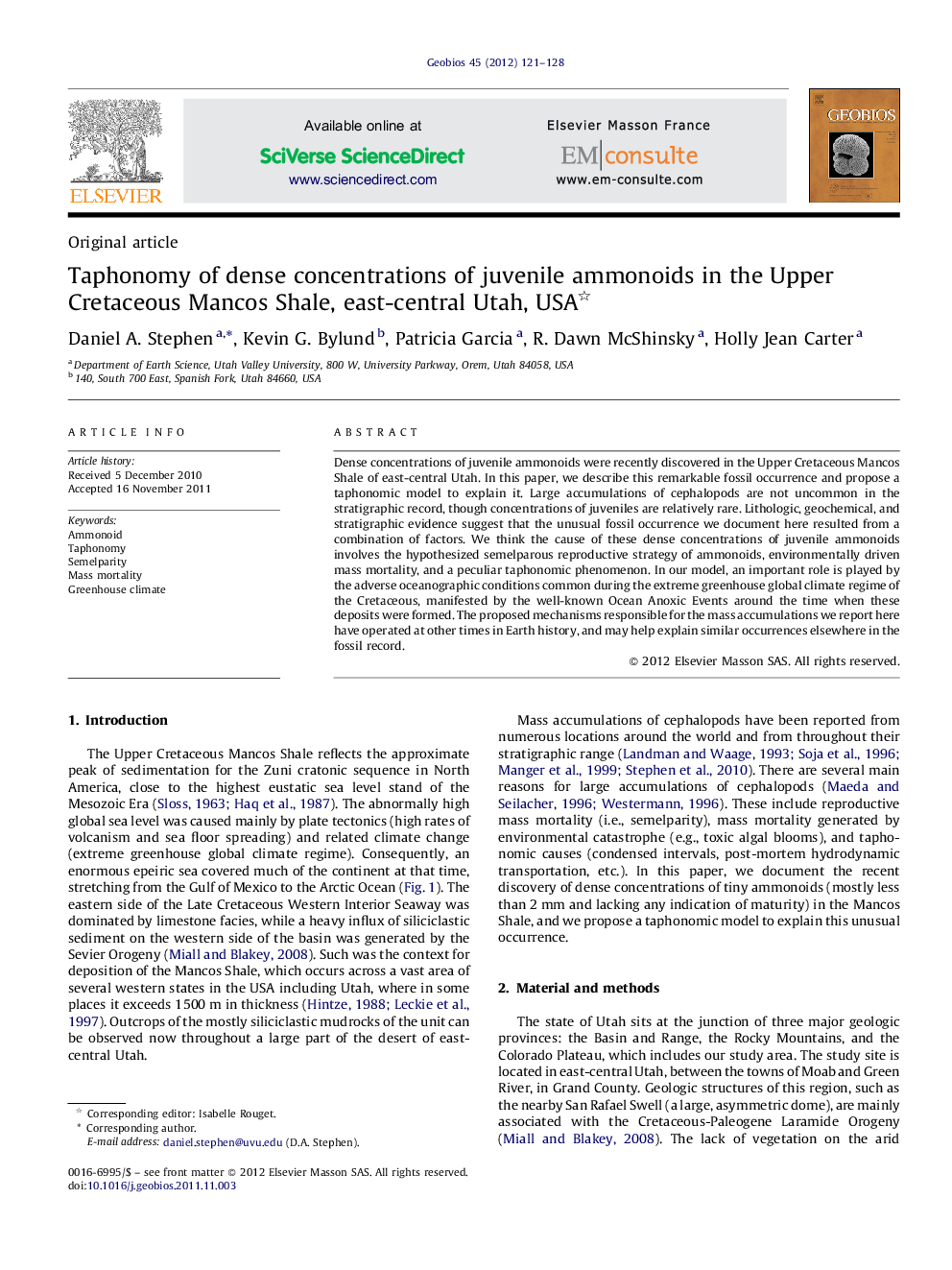| Article ID | Journal | Published Year | Pages | File Type |
|---|---|---|---|---|
| 4748104 | Geobios | 2012 | 8 Pages |
Dense concentrations of juvenile ammonoids were recently discovered in the Upper Cretaceous Mancos Shale of east-central Utah. In this paper, we describe this remarkable fossil occurrence and propose a taphonomic model to explain it. Large accumulations of cephalopods are not uncommon in the stratigraphic record, though concentrations of juveniles are relatively rare. Lithologic, geochemical, and stratigraphic evidence suggest that the unusual fossil occurrence we document here resulted from a combination of factors. We think the cause of these dense concentrations of juvenile ammonoids involves the hypothesized semelparous reproductive strategy of ammonoids, environmentally driven mass mortality, and a peculiar taphonomic phenomenon. In our model, an important role is played by the adverse oceanographic conditions common during the extreme greenhouse global climate regime of the Cretaceous, manifested by the well-known Ocean Anoxic Events around the time when these deposits were formed. The proposed mechanisms responsible for the mass accumulations we report here have operated at other times in Earth history, and may help explain similar occurrences elsewhere in the fossil record.
